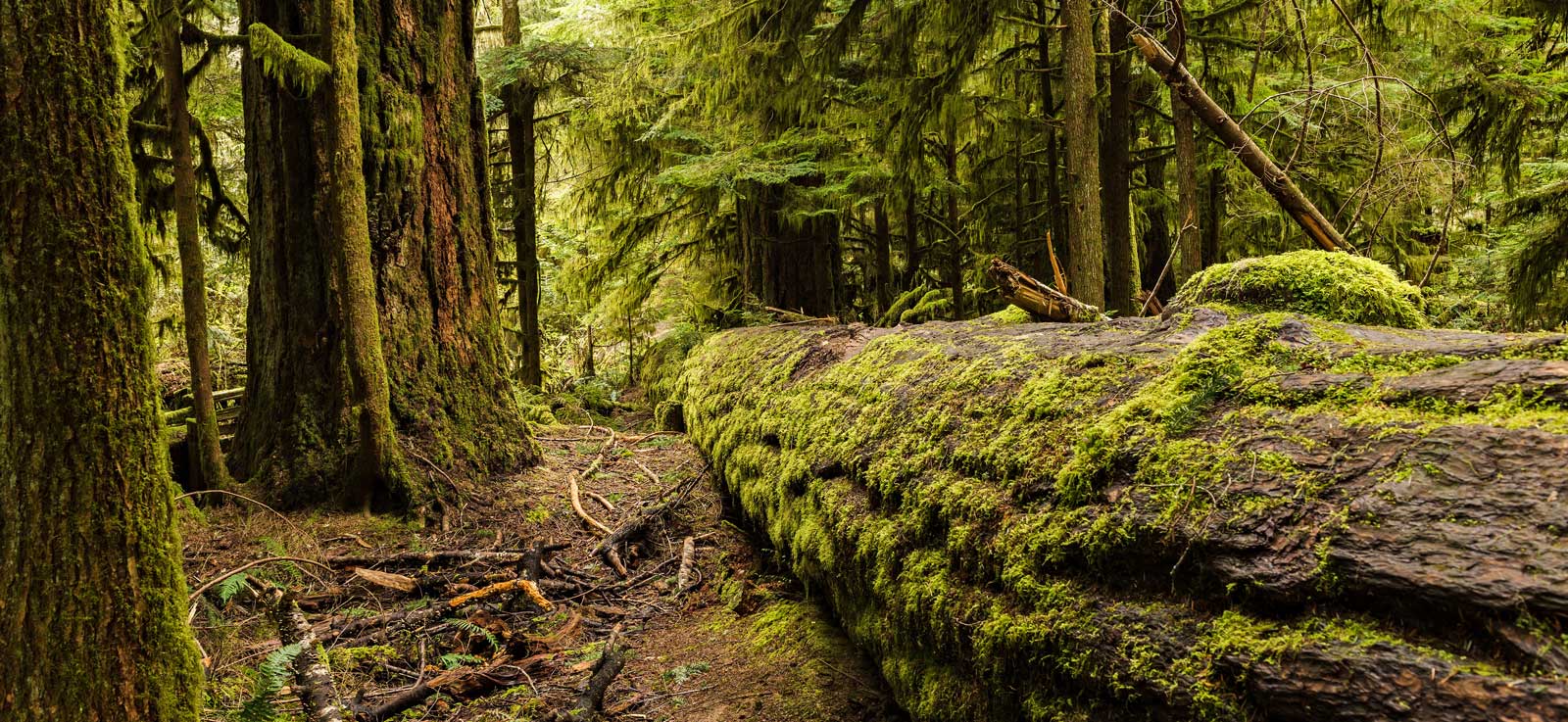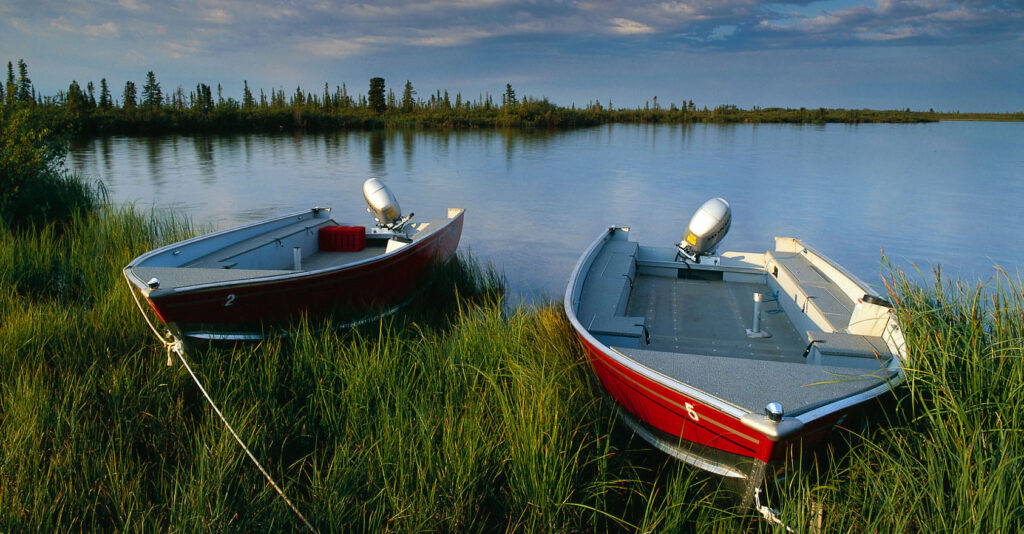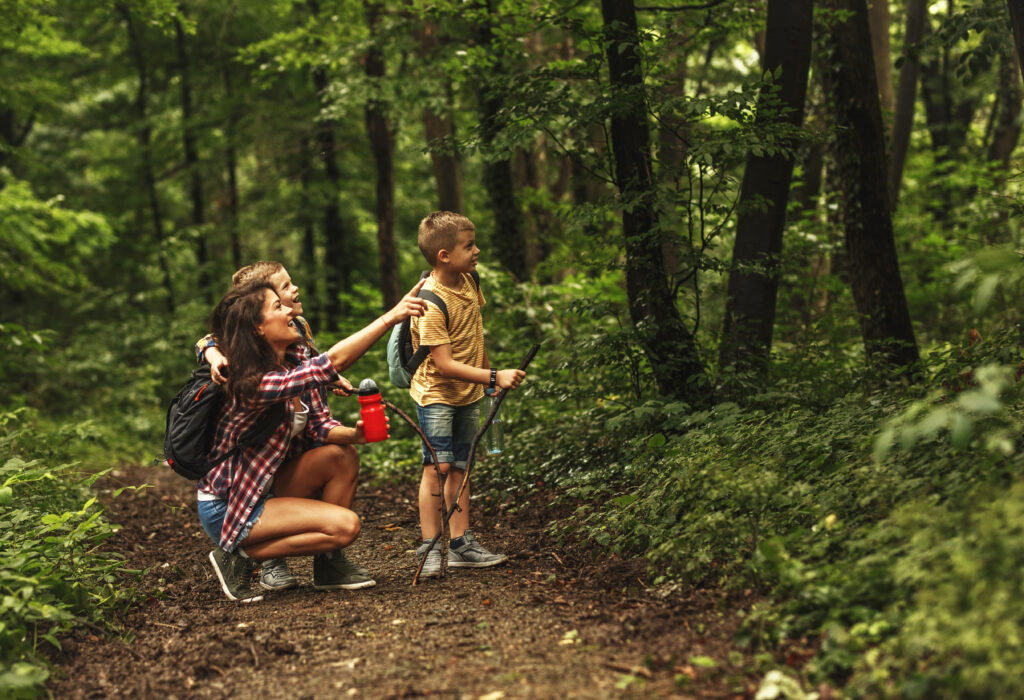Conservation isn’t a one-time assignment — it’s a long-term commitment.
And while hitting targets like protecting 30% of land and ocean by 2030 is essential, how we get there matters just as much as how much we protect.
In this second blog post of our series on “On the Path to 2030 – A Report Card on Progress to Protect Land and Ocean Across Canada” we are taking a close look at the “Learners” in the conservation class, including British Columbia, Yukon, New Brunswick and Manitoba, who earned a C- to a B. 🔍
These provinces and territories are making some effort — they’re showing up, doing bits of the work — but still have a lot to learn about what it takes to deliver high-quality, lasting conservation. That it means more than just designating land; it means Indigenous-led planning, meaningful collaboration, and long-term investment. 🐬
At CPAWS, we’re keeping a close eye on progress. To meet our national goal of protecting at least 30% of land, freshwater, and ocean by 2030, every learner needs to step up and step forward.
Conservation that truly counts — especially in the face of climate change and biodiversity loss — isn’t just about numbers. It’s about respecting Indigenous leadership, protecting the right places, and building lasting solutions. 🌲
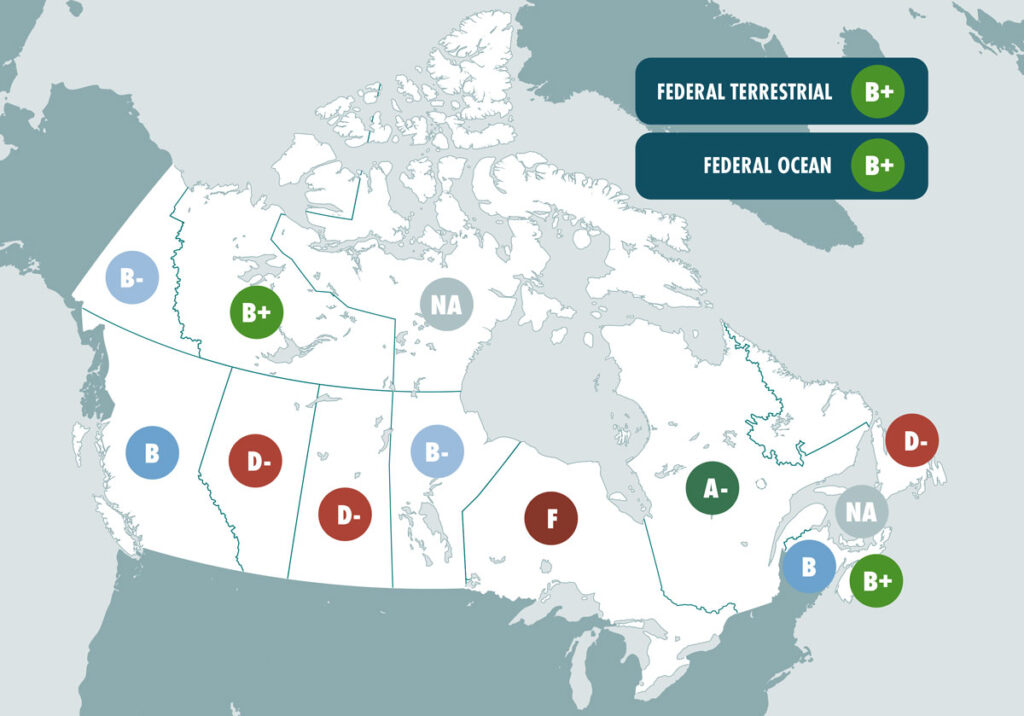
Our report card evaluates how well each province and territory is applying the six recommendations we outlined in our 2022 Roadmap:
- Collaboration to achieve Canada’s 30% targets;
- Setting ambitious regional targets;
- Prioritizing Indigenous-led conservation;
- Completing existing conservation projects;
- Identifying additional high-quality areas for protection; and
- Increasing long-term conservation funding.
So, let’s dive into it and see how British Columbia, New Brunswick, the Yukon, and Manitoba are doing with nature protection. 🐻
British Columbia
British Columbia turned in a conservation project with a stunning cover and fancy fonts, but we noticed that some pages were blank when we flipped through. 🗻
With a provincial commitment to reach 30% protection, the achievement of the Tripartite Framework Agreement on Nature Conservation and progress on coastal protection, they’ve earned B, up from a C in 2021! There’s much potential here — especially with Indigenous-led conservation across the province. 🦌 🌲
To push for that A, British Columbia needs to turn conservation commitments into action through well-funded and clear processes to establish and manage new protected areas on land and ocean.
Keep it up, B.C. Stay focused on handing in that final project. 🐻
Yukon
The Yukon has great potential to become a conservation leader in Canada. The territory earned a B-, maintaining their grade since 2021. Not bad.
Impressively, they have the largest area of land protected, at 21.1%, but most of that protection was due to initiatives spearheaded by federal or Indigenous governments. 🐻❄️
A key area to improve is offering consistent support for Indigenous-led conservation and working in partnership with First Nations on land use planning. These equitable processes will ensure better quality protections. 🦌
In addition: put a moratorium on mineral staking/development in areas slated for land use or conservation planning and create new legislation for mining and tools to relinquish mineral claims. 🐇
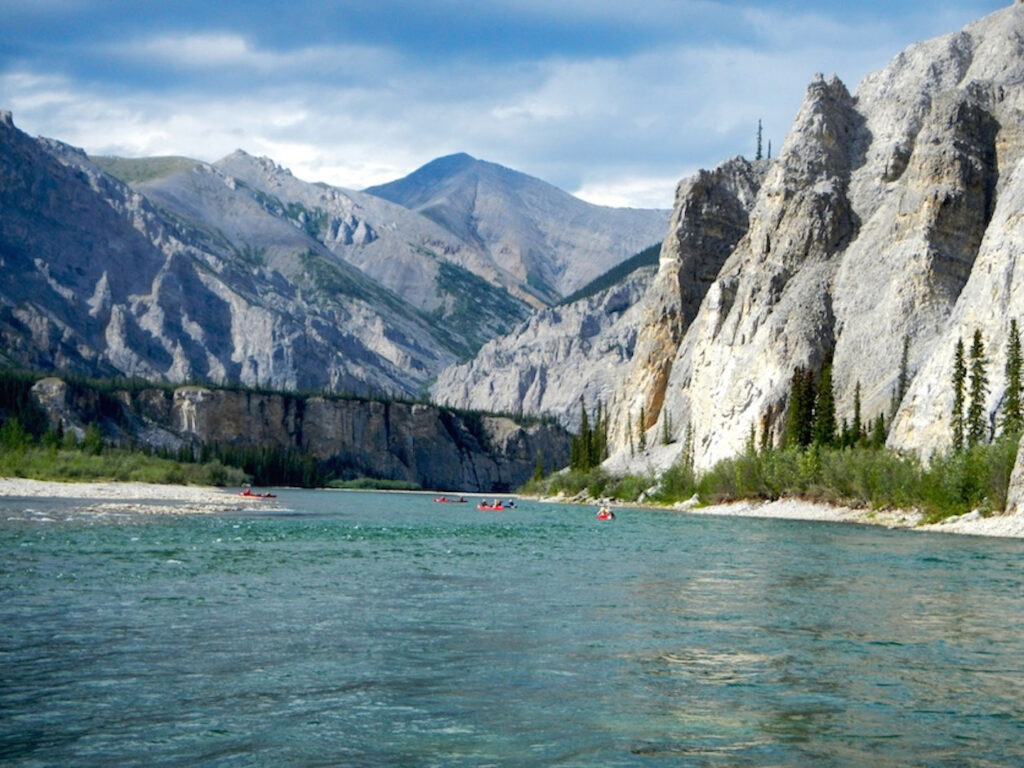
Photo: Hart River Canyon by Alister Thomas
New Brunswick
New Brunswick came into 2024 full of energy, doubling its protected areas and setting a new target to protect 15% of the province! Moving from a B- to a B, this province proves that hard work and determination can pay off. 💪
Like a student that suddenly realized that their work and collaboration with others matters, the province, with its new government, is working on developing better relations with First Nations communities. This makes us hopeful for New Brunswick. However, work is still needed to protect coastal zones. 🐳
To keep improving your marks, New Brunswick:
- Revise key policies to respect Indigenous rights;
- Develop plans to support your current conservation target of protecting 15% of the province;
- Halt and reverse biodiversity loss; and
- Strengthen collaborations with both provincial and federal partners to protect vital ecosystems. 🌱
Keep up the good work, and make sure to finish every assignment. 🦈

Photo: Yellow-spotted salamander by Tom Reichner
Manitoba
Manitoba has so much potential, and when it applies itself, we see amazing work — like its leadership in conservation commitments and its progress with protecting forests and wetlands.
But then, halfway through the semester, it seems to get distracted and forget about the whole ‘conservation funding’ thing. That said, Manitoba’s grade improved since 2021, from a C- to B-. 🐇
Plus, since the report was compiled, a Memorandum of Understanding has been signed that sets the stage for a Nature Agreement. This would advance conservation considerably while striving to maintain Manitobans’ access to nature for hiking, hunting, fishing, camping and more. 🚣🏾🎣
We continue to see important steps to protect nature taken in Manitoba and are encouraged by the progress in protecting the 50,000-square-kilometre Seal River Watershed.🐻❄️
Manitoba needs to continue its good work on Indigenous-led conservation, and start providing long-term resources towards conservation. Manitoba would also really benefit from completing boreal caribou action plans and habitat protection assignments.
Conclusion
Yes, British Columbia, Yukon, New Brunswick, and Manitoba are doing okay. They’re showing up and making progress. But when it comes to conservation, just being present isn’t enough.
As the chart here shows, having more protected land doesn’t automatically earn top marks. B.C. and Yukon may lead in quantity, but they’re still not in the Leader group. That’s because conservation isn’t just about how much land or ocean you protect — it’s about how well you protect it.
High-quality conservation takes more than drawing boundaries on a map. It takes careful, inclusive planning. It takes prioritizing areas rich in biodiversity and carbon storage. And it takes ensuring that Indigenous communities lead the way and that all ecosystems are represented.
This work takes time. But if we want conservation that actually lasts and works, we have to get it right.
And that’s what we’ll be watching for in the months and years ahead.
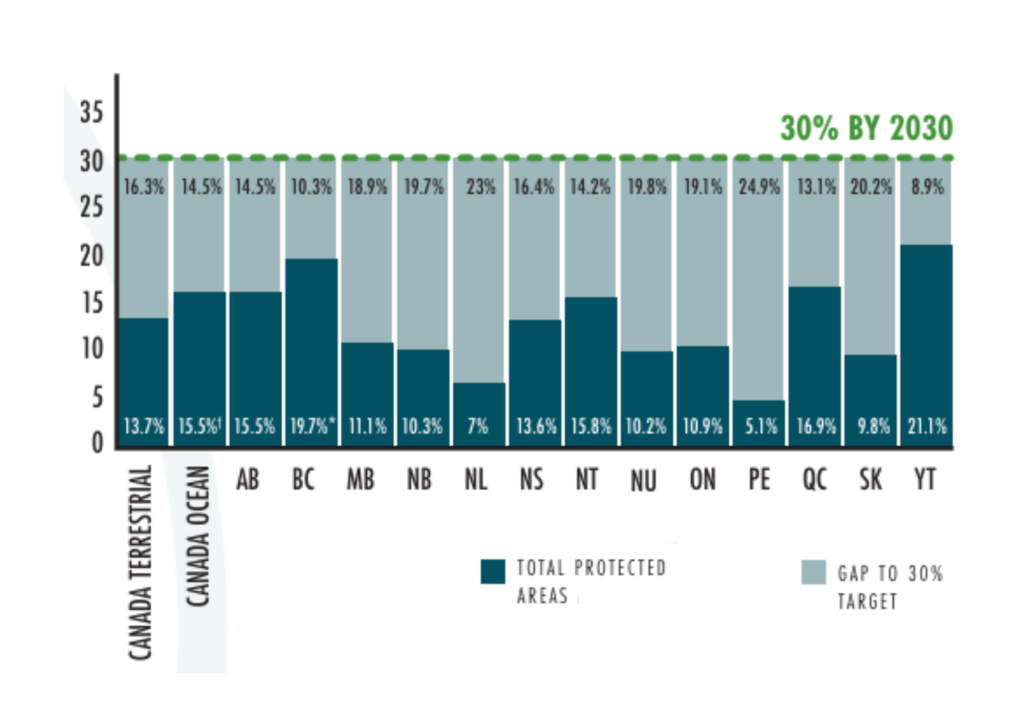
When nature thrives, so do we.💚
Banner photo: Cathedral Grove, MacMillan Provincial Park, Vancouver Island by Ferenc
Other stories you might be interested in:

